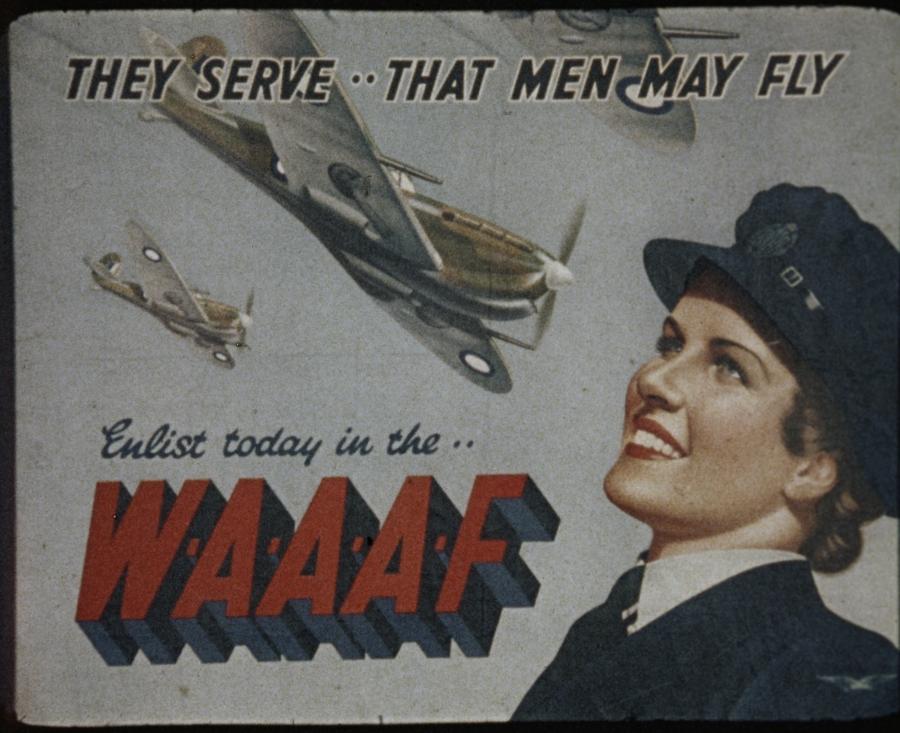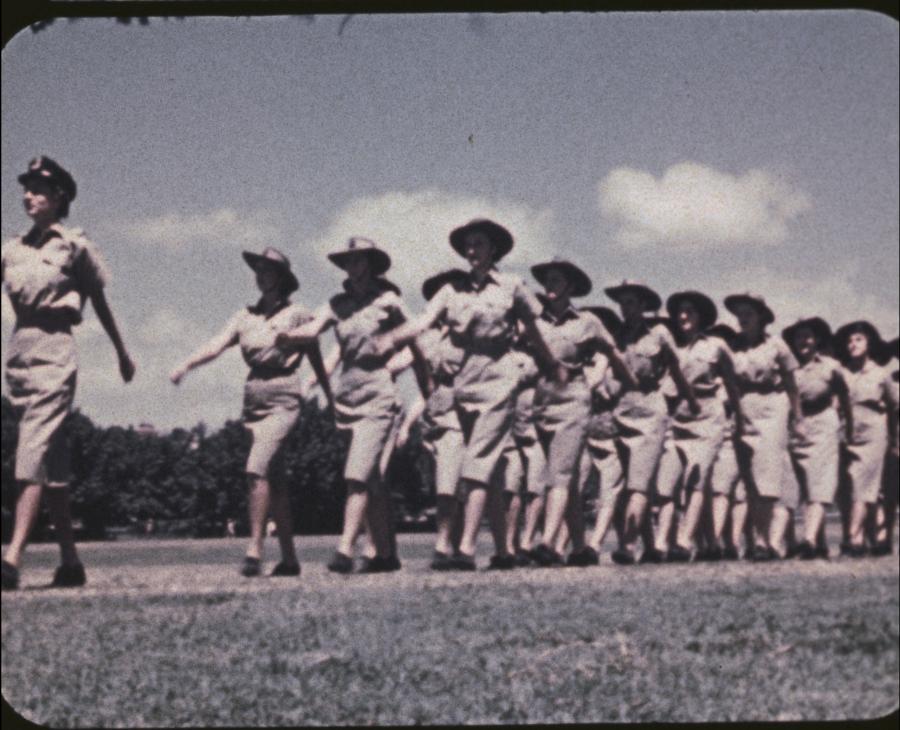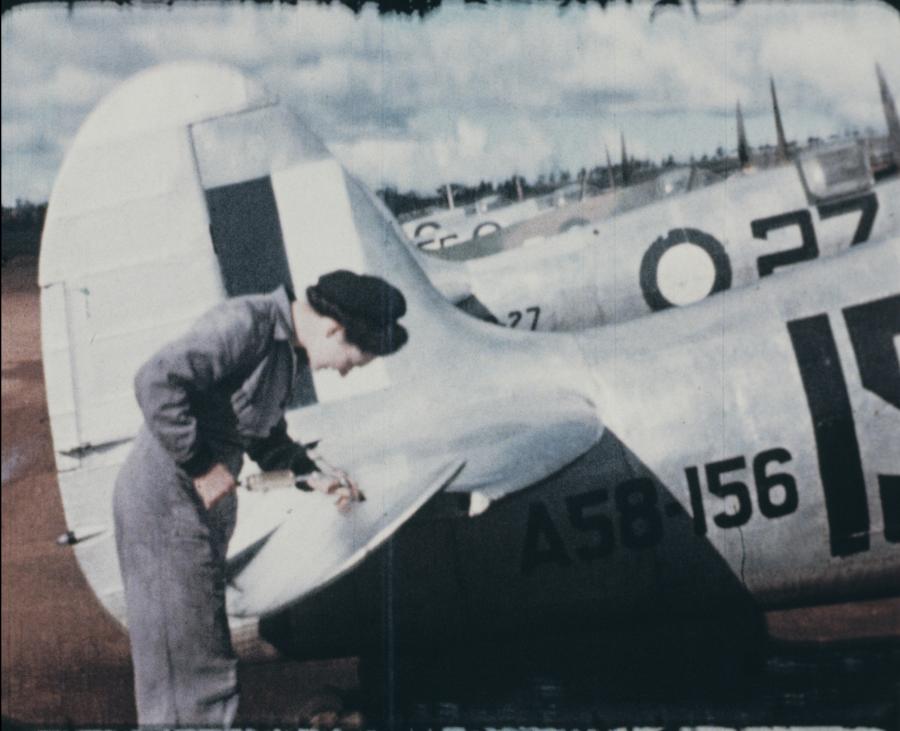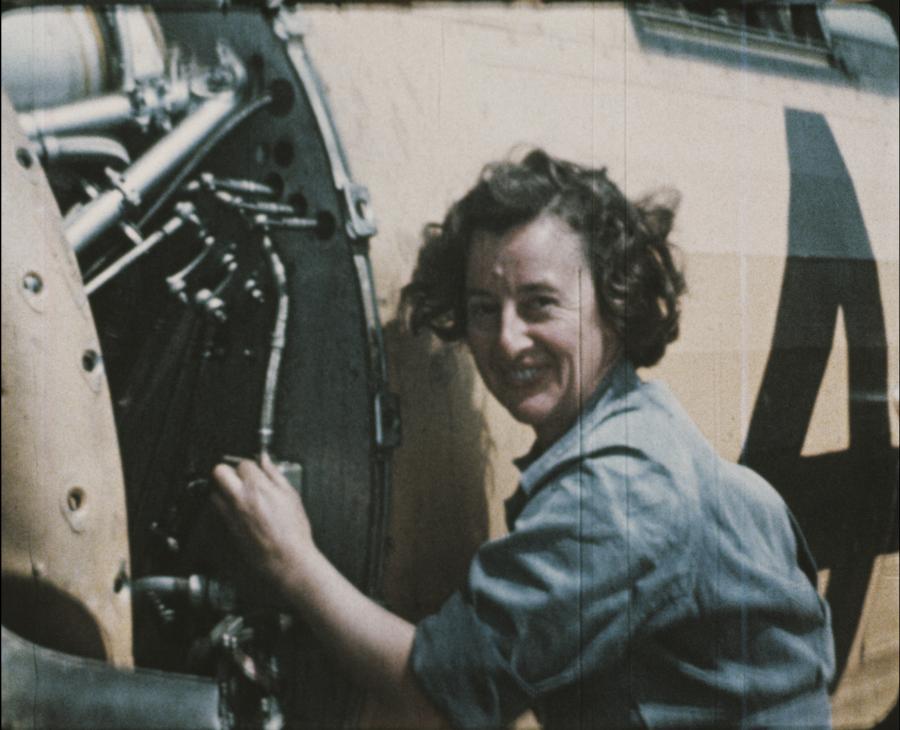The Home (movie) Front

The development of the domestic cine-camera as a smaller, light-weight and user-friendly device throughout the 1930s and 1940s, as well as the increasing availability of 16mm and 8mm film, encouraged individuals to record their lives in moving image and share their films with others. During the Second World War, Australian servicemen and servicewomen filmed their experiences and observations across the country and around the world. These private amateur films, more commonly known as home movies, provide a personal perspective and a unique record of life during the war.
At present, there are approximately 175 home movies held in the Memorial’s Second World War film collection. Of these, the vast majority are filmed by servicemen across all three services, while several remain unattributed. By contrast, there is only one home movie filmed by a servicewoman and one other by a female civilian.
The footage captured by Wing Officer Amy Gwendoline Caldwell (née Stark, known as Gwen or “Starkie”), is an invaluable testament to the work of the Women’s Auxiliary Australian Air Force (WAAAF) and the activities of women on the home front. While other films such as newsreels, official government footage, propaganda features and documentaries capture similar footage, this is the only example filmed by WAAAF women themselves, from their own point of view.
With a keen interest in aviation, a pilot’s licence and a leadership role in the civilian Australian Women’s Flying Club, Gwen Stark was among the first women to be appointed to the WAAAF in March 1941, and the first officer selected in New South Wales. Until her discharge in August 1946, Stark served across Australia in a variety of roles involving recruitment and training, as well as the supervision, discipline and welfare of WAAAF personnel at various bases and headquarters.
Melbourne, Vic. C. 1945. Portrait of Wing Officer Gwen Stark, Staff Officer WAAAF at RAAF HQ.
She was also a keen amateur film maker, and captured over an hour of high-quality colour footage of WAAAF daily life and activities [AWM F10221]. This footage includes scenes of marching and parades, air-raid drills, mess and laundry routines, physical exercise and sports competitions, leisure time, entertainment and concerts, as well as an extensive survey of the trades and roles undertaken by the WAAAF women. Their work as drivers, mechanics, ground crew, armourers, parachute packers, signals and intelligence personnel (among others) is all highlighted in the footage.

Presentation of film donation by Mrs Gwen Caldwell (nee Stark), Women's Australian Auxiliary Airforce (WAAAF) to Australian War Memorial Director Noel Flanagan. PAIU1979/001.04
After the war, Stark screened her home movies at public events and service reunions in Australia and overseas, with accompanying commentary and lectures promoting the important work of the WAAAF. Decades after the war ended, she approached the Memorial to create an edited and narrated version of her wartime home movies, to be kept in the Memorial’s collection for posterity. This became the film They serve that men may fly [AWM F10244], which “depicts many of the work, associations and recreations of the WAAAF”. Stark recorded the narration herself, making clear her intentions to honour and celebrate the WAAAF. “1941 to [19]46 were memorable years for the 27,000 women who served in the WAAAF; their contribution to the war effort made history.”
Stark’s home movie footage features in Action! Film & War, a touring exhibition on display at the State Library of NSW until 28 April 2024 and then the Queen Victoria Museum and Galley, Launceston, from 23 May 2024.
To learn more about the experiences of women serving in the Women’s Auxiliary Australian Air Force (WAAAF) during the Second World War, watch the 2024 Summer Scholar presentation from Summer Scholar, Dominique Jones.




